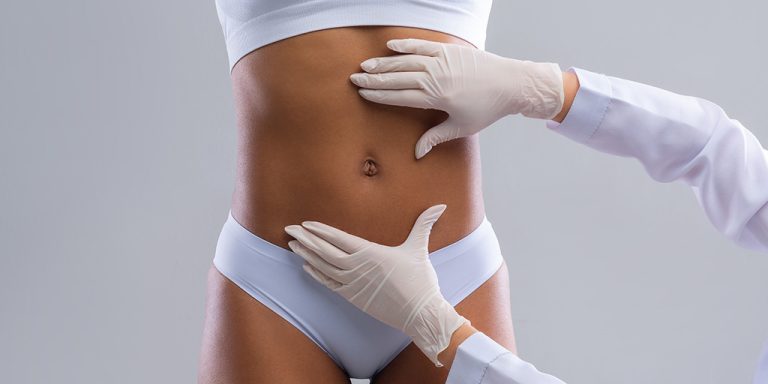Can Dysport Cause Dry Skin? Uncovering the Truth & Solutions
Posted on: April 22, 2024
Understanding How Dysport Works
Mechanism
Dysport acts as a neurotoxin. It temporarily paralyzes muscles beneath the skin. This paralysis reduces the appearance of wrinkles. The active ingredient in Dysport blocks nerve signals. These signals usually cause muscles to contract.
This process smooths out lines and creases. Patients often seek this treatment for a more youthful look.
Treatment Areas
Forehead lines and crow’s feet are common targets for Dysport. Other areas include between the eyebrows and around the mouth. Each area requires precise injections for optimal results.
Doctors assess facial structure before recommending Dysport. They aim to enhance natural beauty without overdoing it.
Duration and Results
Effects of Dysport appear within a few days after treatment. Full benefits are visible after two weeks. The results last up to four months, depending on several factors.
Patients may need follow-up treatments to maintain their desired look. Factors like age, skin type, and lifestyle affect how long results last.
Identifying Common and Rare Side Effects
Common Reactions
Common side effects of Dysport include mild pain, redness, swelling, and bruising at the injection site. These adverse reactions are typically short-lived. Patients often report these symptoms immediately following their treatment.
In most cases, these effects diminish within a few days. It’s crucial for patients to monitor their symptoms. If they persist or worsen, seeking medical advice is advisable.
Rare Occurrences
Rare side effects encompass itching, flu-like symptoms, and muscle weakness. These adverse events are less common but require immediate medical attention. Although rare, they signify a more serious reaction to Dysport.
Patients experiencing such severe symptoms should contact their healthcare provider promptly. Early intervention can prevent complications.
Dry Skin Clarification
Contrary to some beliefs, dry skin is not a directly reported side effect of Dysport. However, related conditions like dry mouth have been noted in rare cases. This distinction is important for patients concerned about skin health post-treatment.
Understanding the full spectrum of potential side effects helps patients make informed decisions about Dysport treatments. While common adverse reactions are usually mild and temporary, being aware of rare but serious side effects is crucial for patient safety.
Exploring the Benefits of Dysport
Cosmetic Use
Dysport, primarily known for its cosmetic benefits, works wonders on the skin. It smooths out wrinkles and reduces the appearance of fine lines, especially around the eyes and forehead. This drug, administered through intramuscular injections, targets affected muscles to relax them, softening frown lines and crow’s feet. The treatment success lies in its precision and ability to provide a more youthful look without altering facial expressions.
Patients often report improved skin texture and a noticeable decrease in signs of aging. Unlike some treatments that require lengthy recovery times, Dysport allows individuals to resume their daily activities almost immediately. This minimal downtime is a significant advantage for those seeking quick cosmetic enhancements.
Therapeutic Uses
Beyond aesthetics, Dysport serves important therapeutic purposes. It effectively treats various medical conditions like cervical dystonia, which causes neck spasms, and limb spasticity. The drug alleviates muscle stiffness and pain by relaxing overly tense muscles. For those suffering from muscle spasms or dystonia, Dysport offers considerable relief.
Moreover, Dysport has shown clinical benefit in managing symptoms of dysphagia and reducing excessive sweating. These applications highlight the versatility of Dysport as both a medicine for chronic conditions and a cosmetic solution.
Addressing Dry Skin as a Side Effect
Dry Mouth Link
While dry skin is not listed as a direct side effect of Dysport, it’s crucial to understand the connection between dry mouth and skin hydration. Dysport, known for its active ingredient that helps in reducing wrinkles, might lead to symptoms like dry mouth or eye dryness in some individuals. These conditions can indirectly affect your skin’s moisture levels.
Dry mouth, specifically, reduces saliva production which is essential not just for oral health but also for maintaining skin hydration. Saliva has enzymes that support healthy skin by aiding in digestion and nutrient absorption, which in turn nourishes the skin.
Skin Monitoring
After receiving Dysport treatment, it’s important to monitor your skin condition. Notice any changes such as increased dryness or itching. While these might not be direct consequences of the treatment, they could indicate an imbalance in the body’s hydration levels post-treatment.
If you experience persistent dry skin or other symptoms like eye irritation or difficulty breathing, seek medical attention promptly. These could signal allergic reactions or other serious side effects requiring professional intervention.
Professional Advice
Managing Dry Skin After Dysport Treatment
Water Intake
Boosting water consumption is crucial after receiving Dysport injections. It helps combat potential dehydration effects that might contribute to skin dryness. Aim for at least eight glasses of water daily. This simple step can significantly improve your skin’s hydration from the inside out.
Drinking more water also supports overall health, which in turn, benefits the skin. Remember, well-hydrated skin appears more supple and vibrant.
Moisturizing
Applying a high-quality moisturizer is key to managing dry skin post-Dysport. Look for products rich in hyaluronic acid or ceramides. These ingredients are excellent for locking in moisture and repairing the skin barrier.
Apply moisturizer twice a day, especially after washing your face. This routine will help keep your skin hydrated and reduce the chances of dryness escalating.
Gentle Skincare
After Dysport treatments, it’s wise to avoid harsh skincare products. Ingredients like alcohol, retinoids, or alpha hydroxy acids can aggravate dry skin. Instead, opt for gentle cleansers and skincare products designed for sensitive skin.
This approach minimizes irritation and supports the skin’s natural healing process. It ensures that your complexion remains smooth and free from unnecessary stress.

Preventing Dry Skin During Dysport Therapy
Hydration Strategies
Before undergoing Dysport treatment, it’s crucial to prepare your skin. Start by drinking plenty of water. This simple step can significantly enhance your skin’s hydration from the inside out.
Use hydrating skincare products too. Opt for creams and serums rich in hyaluronic acid. They help retain moisture, keeping your skin supple.
Consultation Tips
Discuss any dry skin concerns with your provider before treatment. They can offer tailored advice based on your skin type.
Your provider might suggest specific pre-treatment skincare routines. Following these can reduce the risk of developing dry skin post-Dysport.
Post-Treatment Care
Following post-treatment care instructions is key to minimizing dry skin risks. Your provider will give you a list of do’s and don’ts.
Avoid harsh skincare products immediately after treatment. Instead, use gentle, moisturizing options to support skin recovery.
Comparing Safety: Dysport vs. Other Treatments
FDA Approval
Dysport has received FDA approval, marking it as a safe option for cosmetic use. This approval comes after rigorous testing and review of its safety profile. It’s essential to note that such endorsement signifies a high level of trust in the product’s use under medical supervision.
The process involves detailed dose studies to determine the optimal dosage for effectiveness while minimizing side effects. The total dose administered plays a crucial role in ensuring patient safety.
Side Effects
Side effects are an important consideration in any treatment plan. Dysport, like other neurotoxins such as Botox, may cause site-specific reactions. These include swelling or bruising at the injection sites but are generally mild and temporary.
A rare side effect mentioned is dry mouth, which underscores the importance of discussing potential side effects with a healthcare provider before proceeding with treatment. Compared to other treatments, Dysport’s side effect profile is manageable, especially under the guidance of an experienced practitioner.
Qualified Providers
Choosing a qualified healthcare provider cannot be overstated in its importance for ensuring safety and minimizing risks. A skilled provider will use the correct assay method to determine the appropriate doses and injection sites. This precision reduces the likelihood of complications and ensures the most beneficial outcome for the patient.
Final Remarks
Dysport, like any treatment, comes with its share of side effects, dry skin being one among them. However, understanding how Dysport works and recognizing both common and rare side effects can empower you to make informed decisions about your skincare and treatment options. By addressing dry skin directly, managing it effectively after Dysport treatment, and taking preventive steps during therapy, you can enjoy the benefits of Dysport without undue discomfort. Comparing Dysport with other treatments also highlights its safety profile, helping you weigh its advantages against potential drawbacks.
Remember, your journey to a smoother, more youthful appearance should be as comfortable as possible. If dry skin or any other side effect becomes a concern, consult with your healthcare provider for personalized advice and solutions. Stay informed, stay proactive about your skincare, and don’t hesitate to reach out for professional guidance when needed. Your skin’s health and your satisfaction are paramount.
Frequently Asked Questions
Can Dysport cause dry skin?
Yes, while not extremely common, dry skin can occur as a side effect of Dysport treatment. It’s important to stay hydrated and moisturize the skin regularly.
How does Dysport work?
Dysport works by temporarily relaxing the muscles underneath the skin, reducing the appearance of wrinkles and fine lines.
What are some common side effects of Dysport?
Common side effects include mild pain at the injection site, headache, nose and throat irritation, and sometimes eyelid swelling or bruising.
How can I manage dry skin after Dysport treatment?
Managing dry skin involves regular moisturizing with a gentle product, staying hydrated, and avoiding harsh skincare products that can exacerbate dryness.
Is it possible to prevent dry skin during Dysport therapy?
Yes, by moisturizing your skin regularly before starting treatment and maintaining a hydrating skincare routine throughout your Dysport therapy, you can help prevent dry skin.
How does Dysport compare to other treatments in terms of safety?
Dysport is considered safe and effective for most people when administered by a qualified professional. It has a similar safety profile to other botulinum toxin treatments like Botox.
Are there any rare side effects of Dysport I should know about?
Rare side effects can include allergic reactions, muscle weakness, difficulty swallowing or breathing. If you experience these symptoms, seek medical attention immediately.





